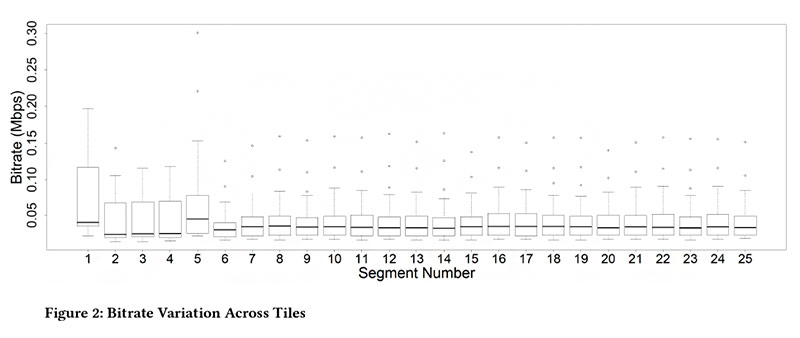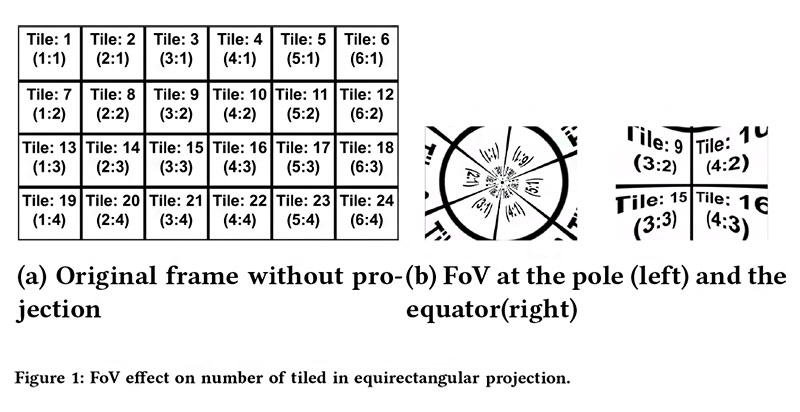The soaring popularity of 360-degree video streaming has ushered in innovative strategies aimed at optimizing bandwidth consumption. This is primarily achieved by utilizing independently-decodable tiles, which efficiently preserve bandwidth for areas of the video outside the viewer’s immediate Field of View (FoV). However, a noteworthy challenge arises in the form of variable tile bitrates, posing a complex obstacle when making rate adaptation decisions for each individual tile within every segment of the video stream.
The Problem
The variability in per-tile bitrates can lead to suboptimal rate adaptation when streaming tiled videos over DASH. Existing methods often assume uniform bitrates within a segment, which is not the case due to per-tile variations. This discrepancy complicates rate adaptation, requiring the client to make rate decisions for each tile.

The Solution
To address this issue, the research formulates the per-tile bitrate adaptation problem as a multiclass knapsack problem with a dynamic profit function. This function takes into account per-tile bitrate, buffer occupancy, and the current FoV. A greedy heuristic for multiclass knapsack is employed to determine the representation level to download for each tile. Extensive evaluations demonstrate that this rate adaptation algorithm outperforms existing methods, reducing the number of stalls, stall durations, and quality switches while maintaining or even slightly increasing tile quality. These improvements remain effective even with significant head movement and FoV changes during streaming.
Background
The realm of 360-degree video content has ushered in a fresh dimension of immersive viewing experiences. In recent years, a plethora of innovative techniques have emerged, encompassing aspects of encoding, projection, and delivery tailored specifically to the unique demands of 360-degree videos. Notably, the concept of motion-constrained tiling, harnessed alongside the High-Efficiency Video Coding (HEVC) standard, has revolutionized the landscape. This approach allows for the blending and decoding of video tiles characterized by diverse qualities and bitrates. Such flexibility empowers content providers to strike a balance between video quality and bandwidth utilization based on the viewer’s dynamic Field of View (FoV). This means that tiles situated far from the FoV can be rendered at lower quality without significantly compromising the viewer’s overall Quality of Experience (QoE).
Rate Adaptation and Tile Bitrate Allocation
The rate adaptation process for tiled video streaming involves selecting the representation level to download for each tile. Existing methods often allocate the same representation level to all tiles within and near the FoV, assuming uniform bitrates within a segment. However, per-tile bitrate variations render this approach suboptimal. The proposed solution employs a tile rate allocation method based on a multiclass knapsack model with a dynamic profit function that accounts for per-tile bitrate, buffer occupancy, and FoV. This approach ensures better performance in terms of stalls, switches, and quality.
Conclusions
This research sheds light on the challenges posed by bitrate variability across tiles in 360-degree video streaming and presents a robust solution to the tile rate allocation problem. By considering per-tile bitrates, buffer occupancy, and FoV, this method significantly enhances key QoE dimensions while reducing bandwidth wastage for non-visible tiles. The versatility of this technique extends to other tile-based video content formats, such as zoomable videos and multi-view videos.

I am sure this piece of writing has touched all the internet visitors, its really really pleasant article on building up new webpage.